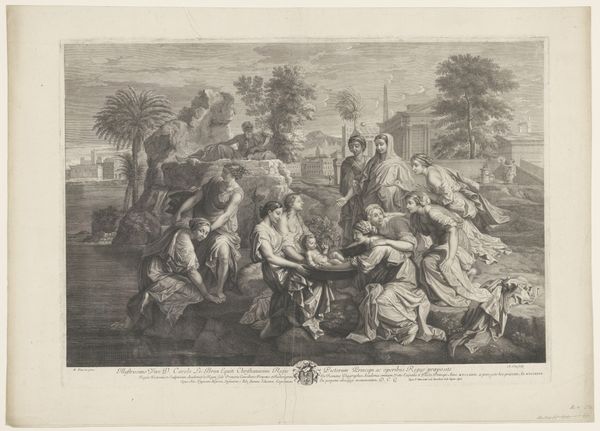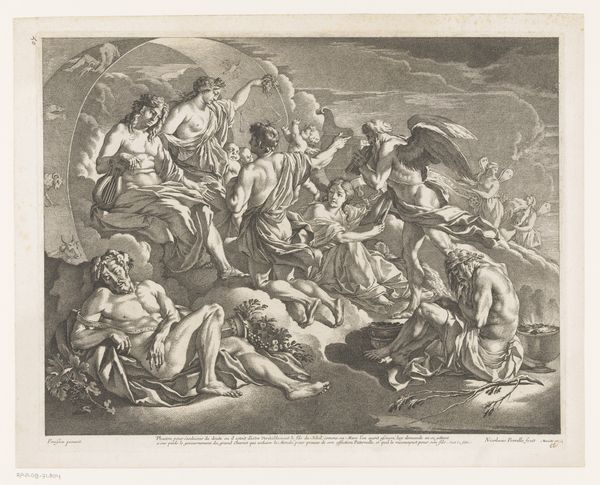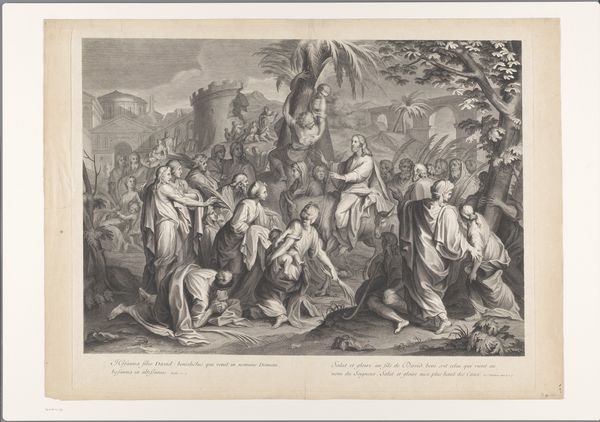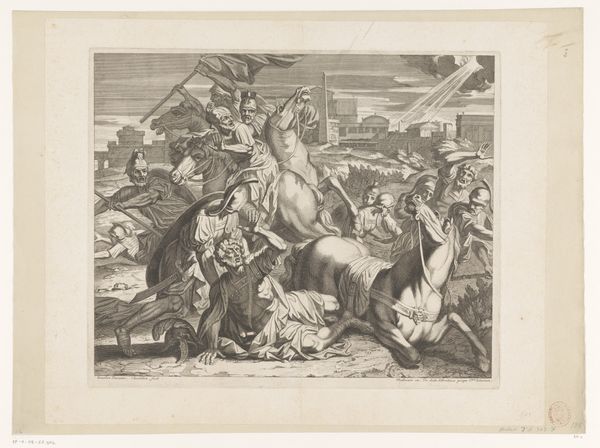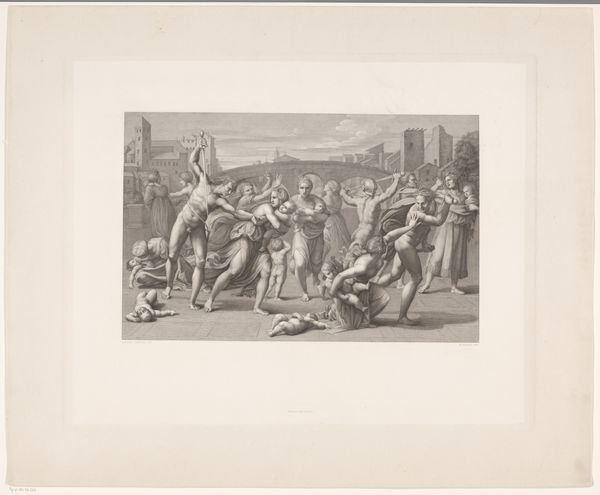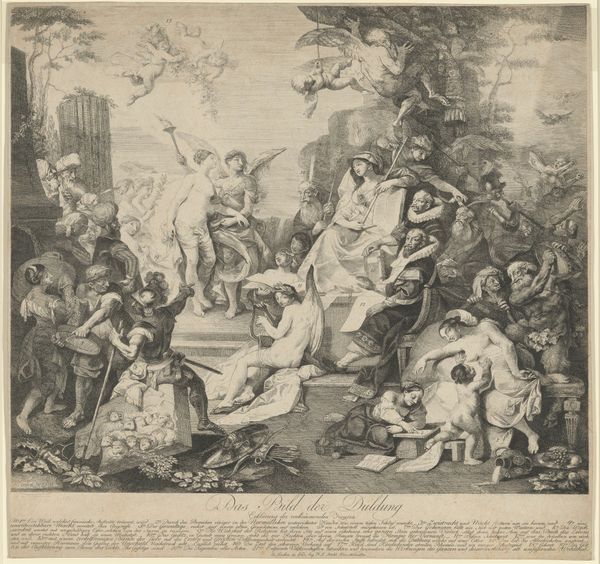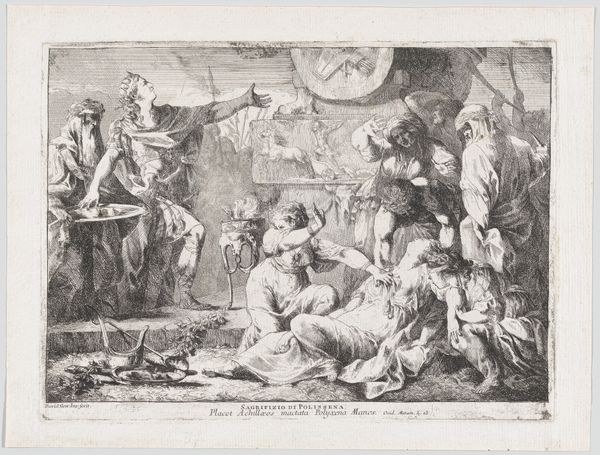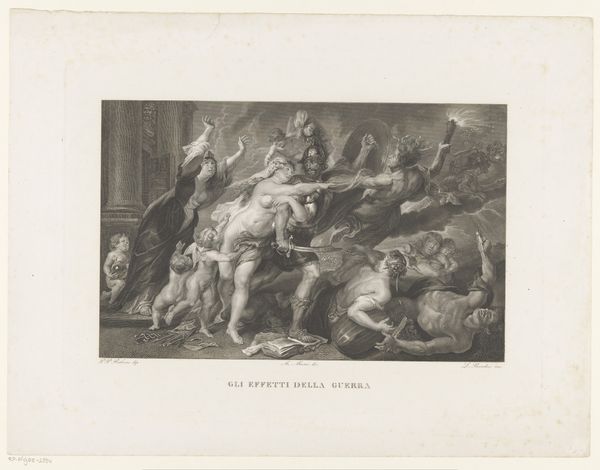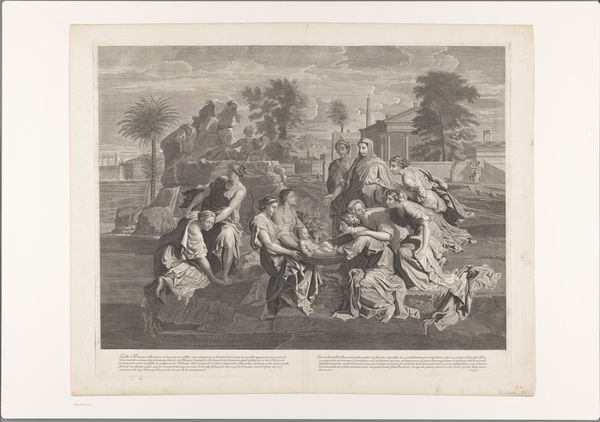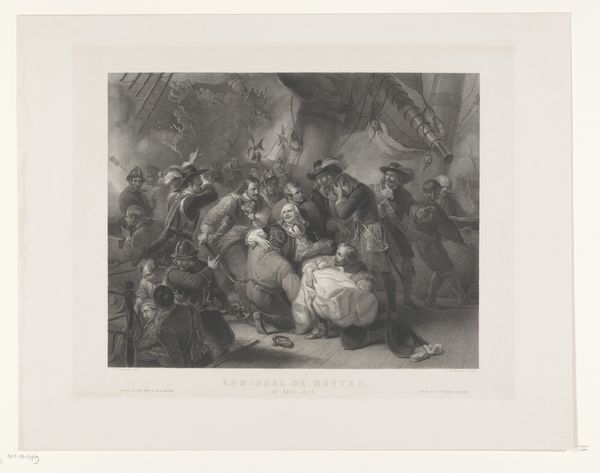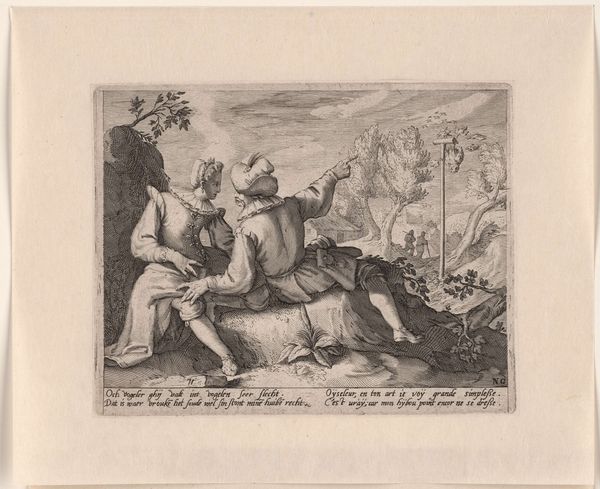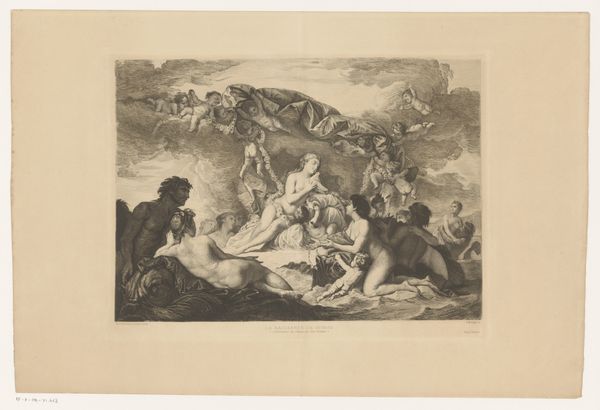
engraving
#
baroque
#
old engraving style
#
figuration
#
history-painting
#
academic-art
#
engraving
Dimensions: height 302 mm, width 593 mm
Copyright: Rijks Museum: Open Domain
Curator: Well, the scene here is definitely intense. My first reaction is how dynamic it feels, with all these swirling figures frozen in such violent action. Editor: Indeed! Let's provide some context. This engraving, "Hercules Bevecht de Centauren," which translates to "Hercules Fighting the Centaurs", was created by Louis Desplaces, sometime between 1718 and 1740. It illustrates a popular scene of brutality. Curator: A rather brutal scene it is. Desplaces really emphasizes the contrast between light and shadow to highlight the muscular bodies locked in combat. It brings forward an immediate sense of tension in the work. The line work in the engraving adds texture that you wouldn't immediately recognize. Editor: I would say this battle embodies the Baroque ideals. The struggles of humanity that are revealed in these popular stories. Desplaces' decision to depict this event speaks to the pervasive theme of human struggle against chaos, good versus wild barbarism, something which would certainly resound in academic circles of that period. Curator: I suppose for that to land effectively, Desplaces is heavily reliant on the traditional techniques. What this means for the viewer is clarity that is hard to dispute with his visual choices, making this violence explicit, a quality inherent to academic art from the period. This work almost romanticizes this violent struggle as heroic or divine. Editor: Absolutely, the bodies of Hercules and the Centaurs fill up the space and draw one's eye immediately, it emphasizes this dichotomy between beauty, which comes from an understanding of classical proportions, versus grotesque deformation that is represented in defeat. The frame itself contains imagery which is hard to ignore, given that it also continues a similar theme of alternating power in mythic forms. Curator: Observing this scene has me thinking about its broader function in society. The reproduction of such violent mythological episodes speaks to how dominant structures would create morality for others to emulate and engage with—either positively or negatively, I am curious about those who viewed the engravings from a different lens than intended. Editor: Fascinating how the details continue to surface, offering different views into art historical interpretations and their formal structure!
Comments
No comments
Be the first to comment and join the conversation on the ultimate creative platform.
